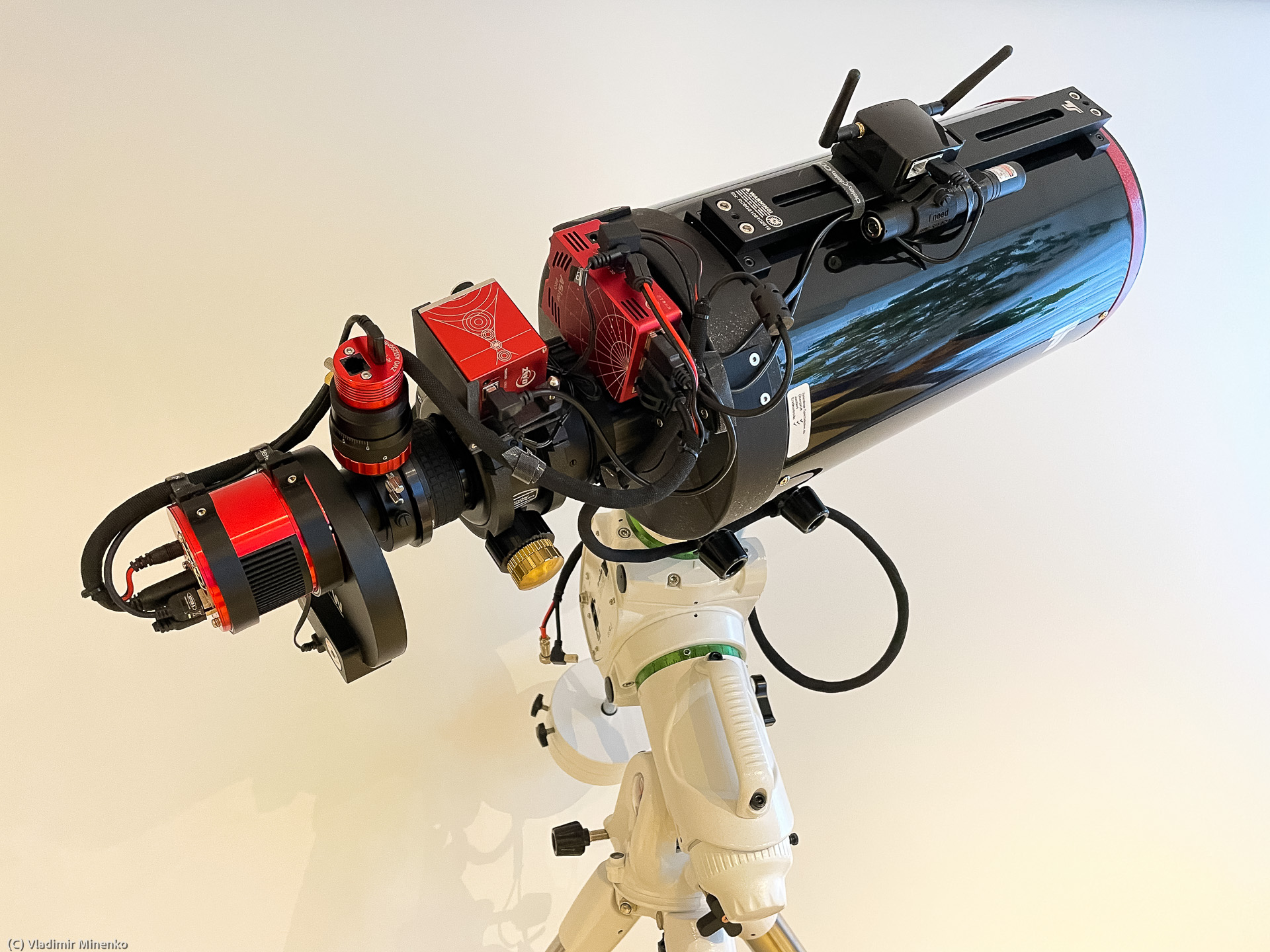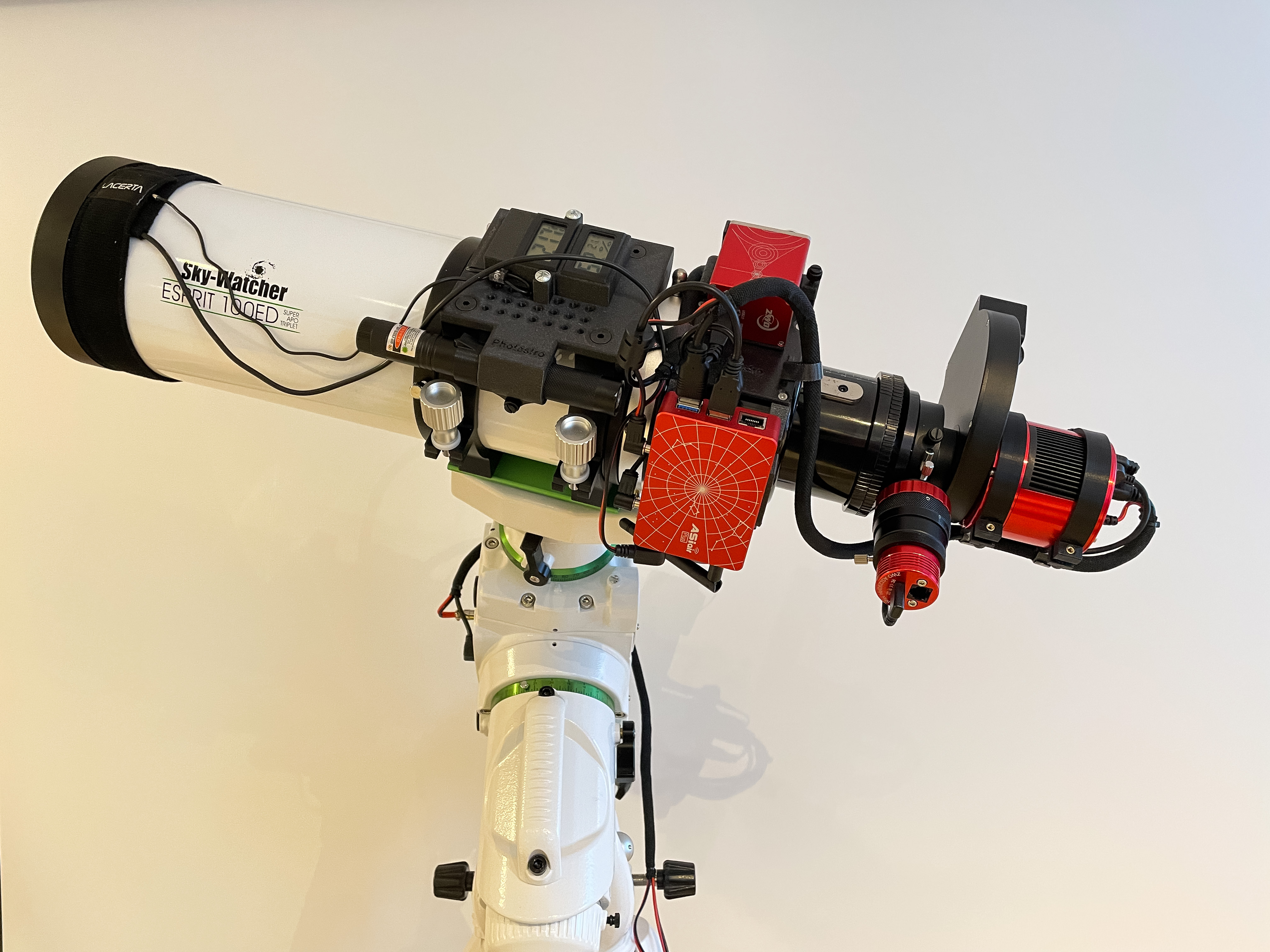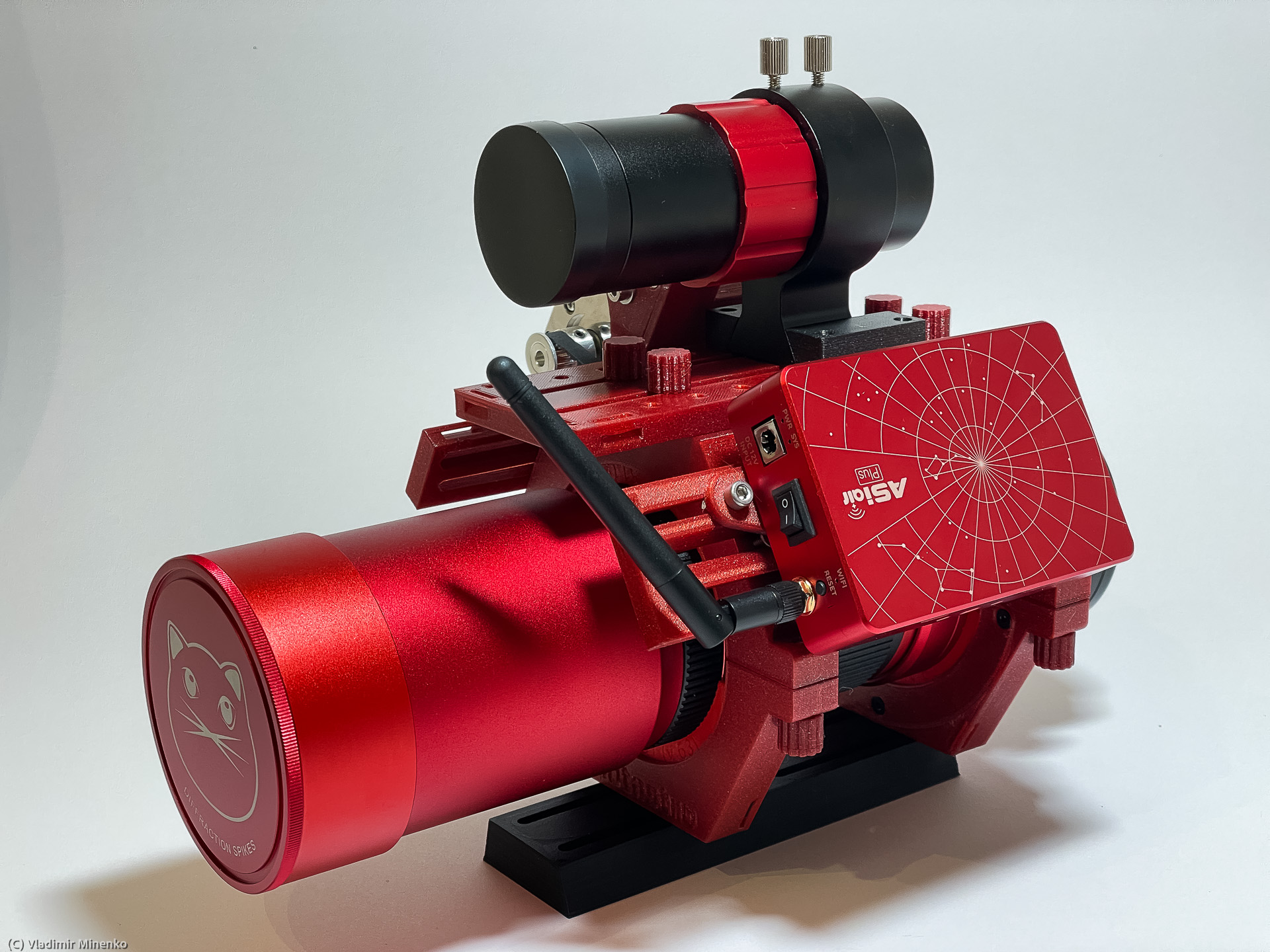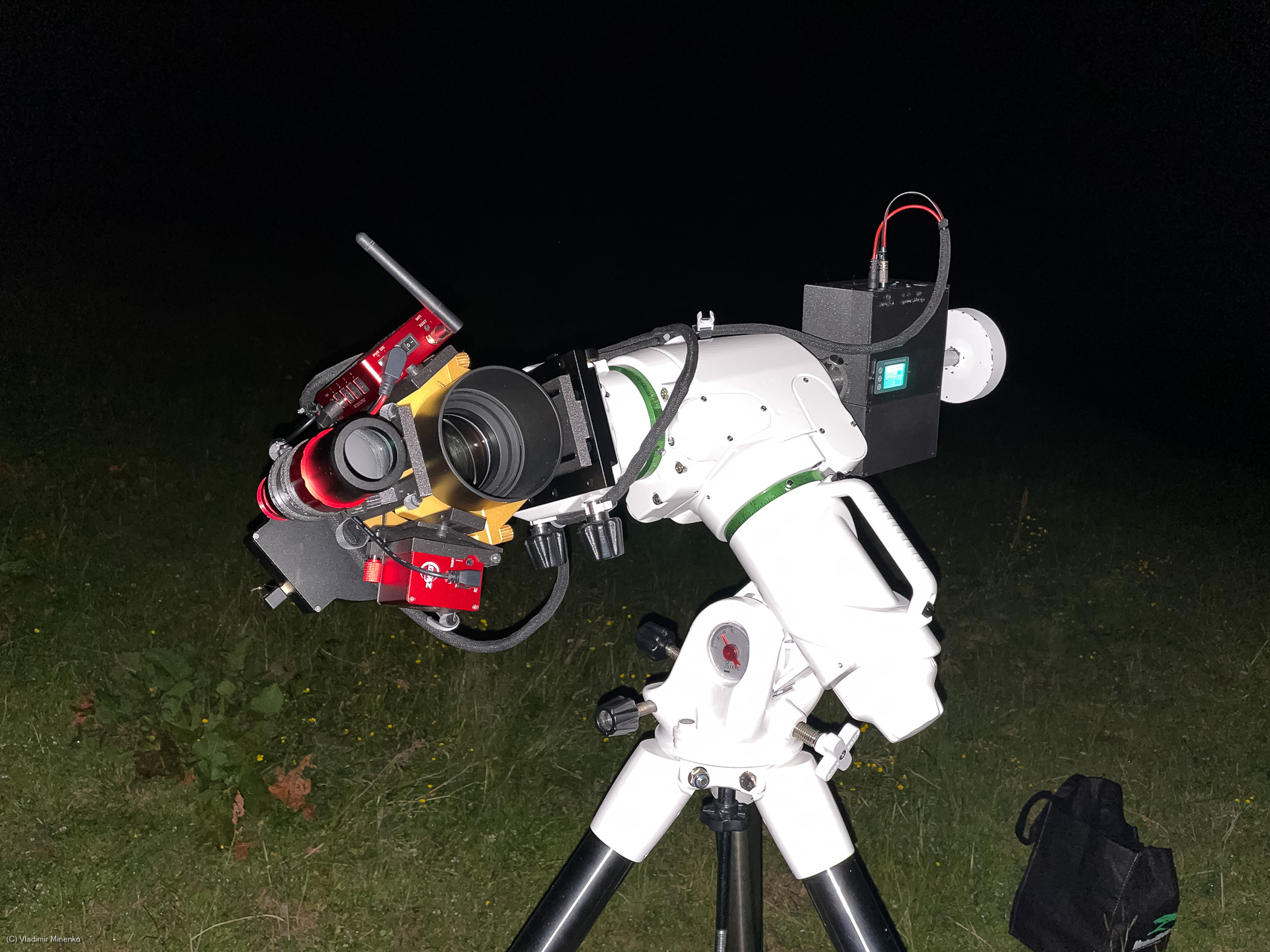Getting the Focal Length from 1650mm to 135mm with only Three Telescopes and One Lens
It took a portion of luck and some time to find this...RC8 for the range from 1625mm at f/8 to 1050mm at f/5.2
It happened to me to meet two guys who were photographing on the same place as I once did. They both were using RC8 (8″ Ritchey-Chrétien, https://en.wikipedia.org/wiki/Ritchey–Chrétien_telescope) telescopes. Later on, we discussed why they use RC8 and what other parts of the optical train they use. It turned to be a popular and an interesting choice known to many other astrophotographers.
First of all, the RC8 provides a focal length which I would never achieve with any photography lens: 1625mm at f/8 with 203mm (8″) opening. Even after substracting the obstruction area caused by the secondary mirror, an RC8 provides 180mm effective opening.
Moreover there is a 0.65 reducer from Starizona – APEX ED L, which is designed for Sky-Watcher Esprit telescopes, but perfectly works with RC8. Both folks were using APEX ED L with RC8 even most of the time. When using Starizona APEX ED L on RC8 you are getting 1065mm at f/5.5 which is exceptional for this size and the price of RC8.
The major drawback of all mirror telescopes is a need for a regular collimation. Most RC8 on the market are produced by GSO (Guan Sheng Optical, Taiwan). It seems that GSO did a very good job with RC8, on the optical and mechanical side. Yes, collimation is needed, but not so often and can be done easily with modern tools.
I went for RC8 with the steel tube. The carbon version was not in stock at that time.

The original focuser was replaced by the Baader Focuser Diamond Steeltrack BDS-SC 2″ focuser which is more stable and has a smoother gear.
Today, I also believe that 1650mm focal length at the resolution limit for most of us who are not leaving on La Palma or in Chilean alps. According the Rayleigh formula, 1650mm correspond 0.08 acr-seconds resolution. This is far beyond what is given by seening (best 0.5 acr-seconds) in most places in the world. Using RC8 with the 0.65 APEX ED L reducer and popular cameras better co-relates with regular seening. See https://astronomy.tools/calculators/ccd_suitability for more details.
Sky-Watcher Esprit 100ED for the range from 550mm at f/5.5 to 350mm at f/3.5
Some time later I invested in the Sky-Watcher Esprit 100ED (selected and tuned by Lacetra Optics, Austria) to close the gap in the focal range between 200mm on Canon EF 200mm f/2.8L II USM which I used that time and 1065mm on the RC8 with the APEX ED L reducer.
Sky-Watcher Esprit 100ED provides native 550mm at f/5.5 and is provided with 1.0 flattener which is specifically designed for it. In combination with Starizona APEX ED L it provides 350mm at f/3.5 flat-field picture with up-to 43mm in diagonal. Despite my earlier considerations for other telescopes in this focal length, I still decided for Sky-Watcher Esprit 100ED which is a more expensive choice, since it is widely known for it optical quality and can be pre-selected and tested with a report by Lacetra Optics.

RedCat 51 replaces Canon EF 200mm f/2.8L II USM
I once for the Canon EF 200mm f/2.8L II USM second hand and used it for a while with success and joy. As I was designing the “On-OTA” mounting kit, I got the RedCat 51 on loan basis. During the short loan time, there was clear night, and I compared the RedCat 51 with the Canon EF 200mm f/2.8L II. The result was so impressive that I decided to keep the RedCat 51 and sell the Canon EF 200mm f/2.8L II USM. I still believe that Canon EF 200mm f/2.8L II USM is the best choice for money at the moment. It is out of production, and so is available second hand only. You can find it for 400-600 Euro. There is neither a comparable “real” telescope for this money, nor another photography lens providing a comparable quality. RedCat 51 costs the double, even used.

The Samyang Optics 135mm F2.0 ED UMC
This lens seems to stay as irreplaceable choice for the focal lens below 200mm. It is available for almost all mount systems. This is meanwhile the only DSLR lens I use for the deep sky astrophotography.

0 Comments